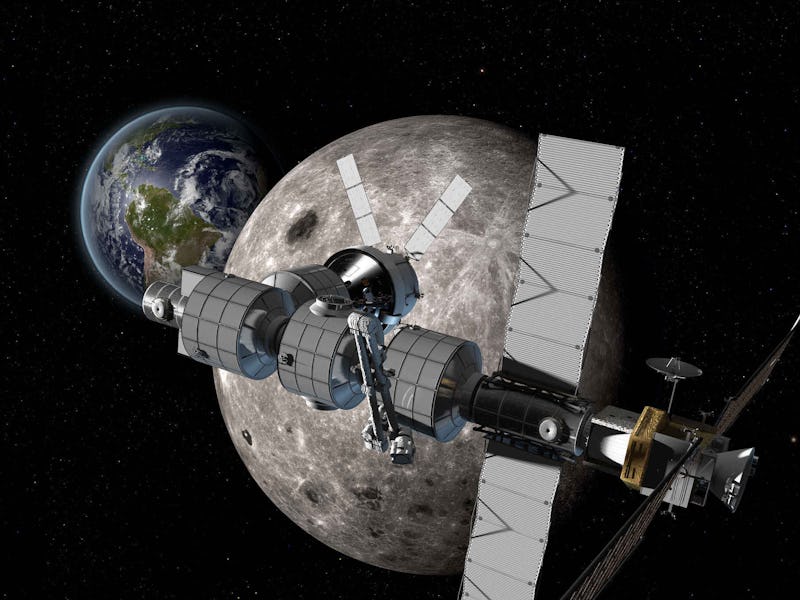Boeing's Lunar Space Station Will Be Stepping Stone to Mars

Boeing has revealed a timeline for the assemblage of its highly anticipated crewed lunar space station, which will serve as a key testing ground on our journey to Mars. Using five Space Launch System and Orion spacecraft launches to bring all the components into space, Boeing says it will assemble the station between 2021 and 2025.
This station is essentially the second phase of Boeing’s long-term plan to put humans on Mars. Following tests at the International Space Station, the aerospace company will use this structure to test life-support technologies and various vehicular operations in the moon’s orbit. Later, in the early 2030s — according to Boeing vice president and general manager for space exploration John Elbon — there will be a mission to the red planet’s orbit, followed by a surface landing a few years after that.
Boeing’s proposed lunar station will comprise five main elements: two habitat modules, an airlock, a logistics module, and a power bus and augmentation module. The astronauts about it would be tasked with tougher assignments and conditions than those currently taking place on the ISS, like having their communications system deliberately delayed to simulate conditions they’d face on the much more distant Mars. Elbon has also raised the possibility of using the station to explore the far side of the moon.
The importance of lunar testing to the Mars missions is actually a point of contention among the field’s biggest players. NASA is firm in its stance that the moon is a crucial resource for testing technology and various logistical operations — last year, the organization put out a comprehensive 35-page plan for putting humans on Mars, the biggest takeaway from which was that the moon is basically the best research tool in our arsenal.
On the other side of things, SpaceX CEO Elon Musk is saying the moon is essentially a middleman to be cut out. (He’s not alone — also of the opinion that the moon is boring is former astronaut and current America’s sweetheart Buzz Aldrin, who would be in a position to know). Musk’s Interplanetary Transport System will make no stops at the moon, instead heading straight out into deeper space and toward the ultimate end game, Mars. Musk wants to land his Red Dragon spacecraft on the planet’s surface by 2018, making his by far the most ambitious plan in what’s become our generation’s defining space race.
It would be easy to assume Boeing’s and NASA’s slower-and-steadier approach would be both less exciting and more successful, but the truth is that 2016 has seen pretty exhilarating milestones achieves on all sides. In the end, whether the moon will end up playing a big role in our historic journey to Mars simply remains to be seen.